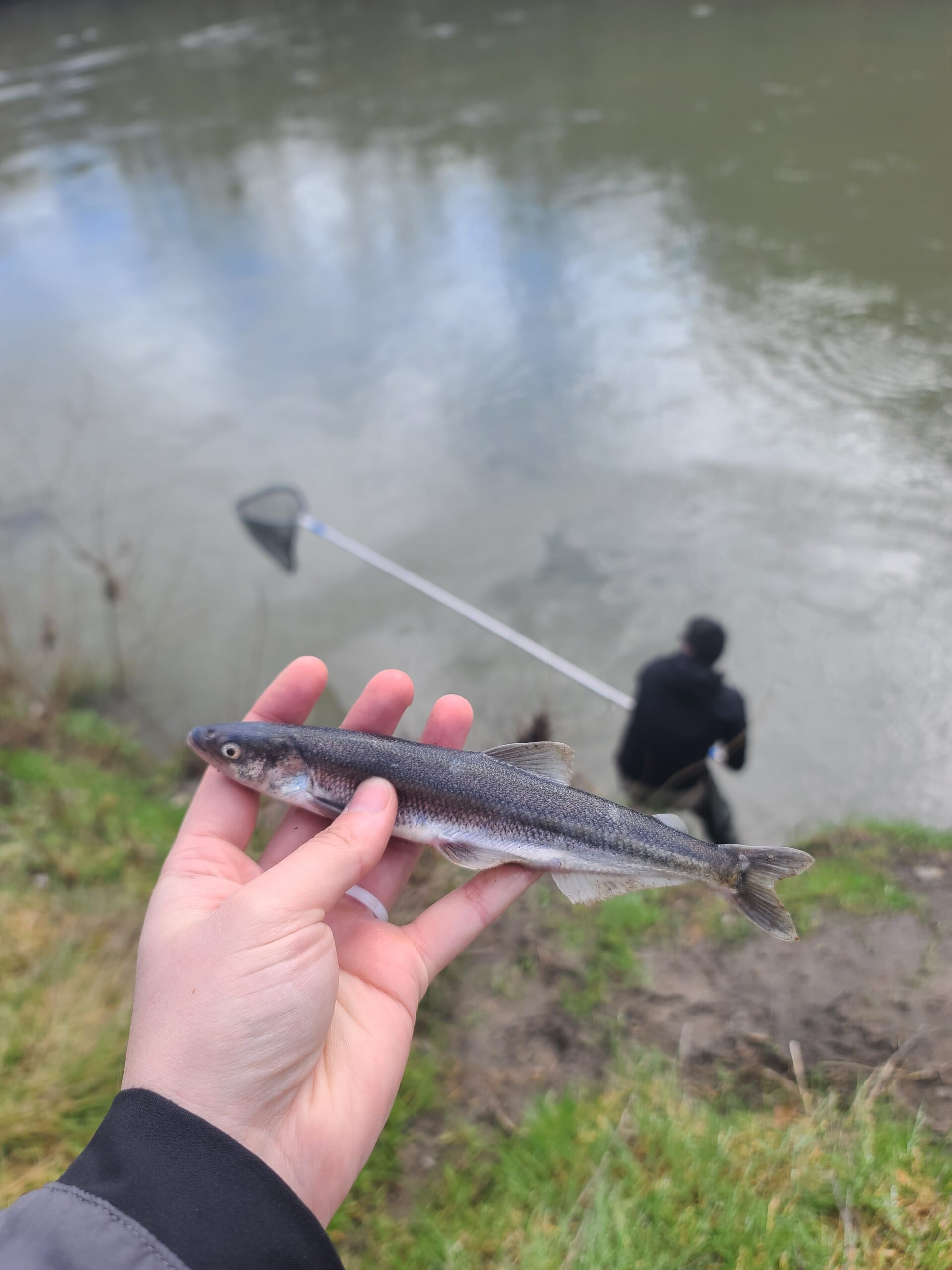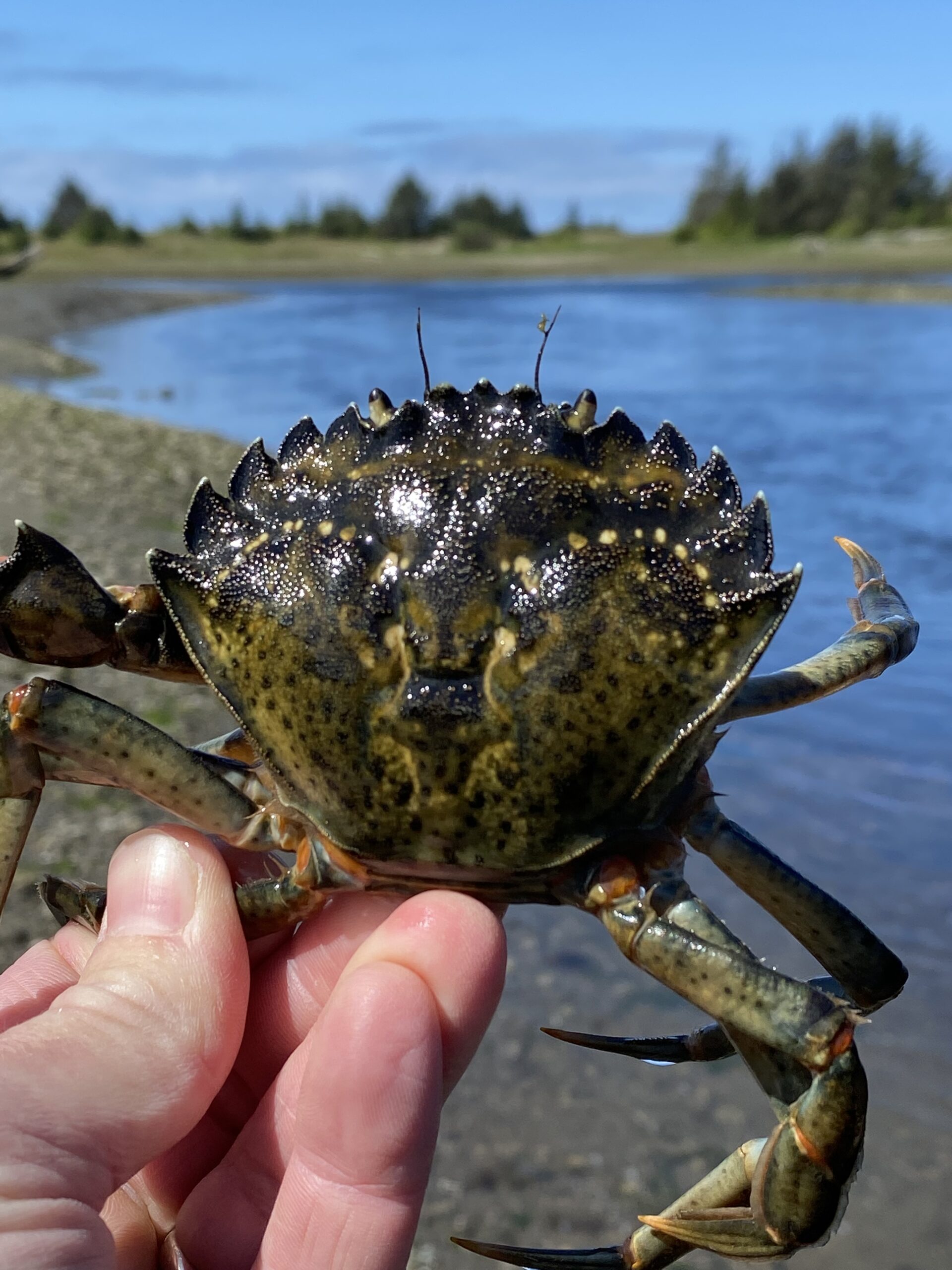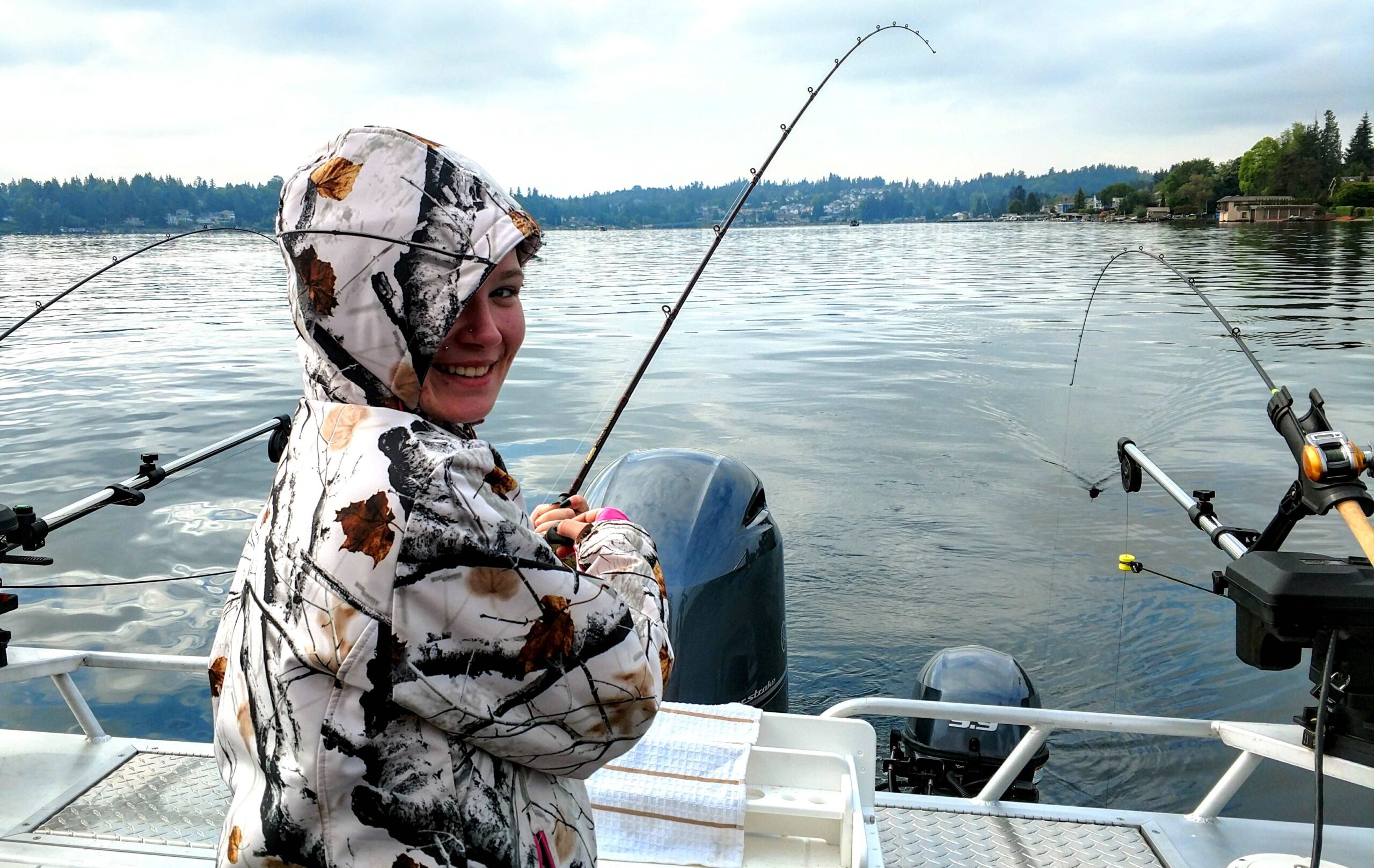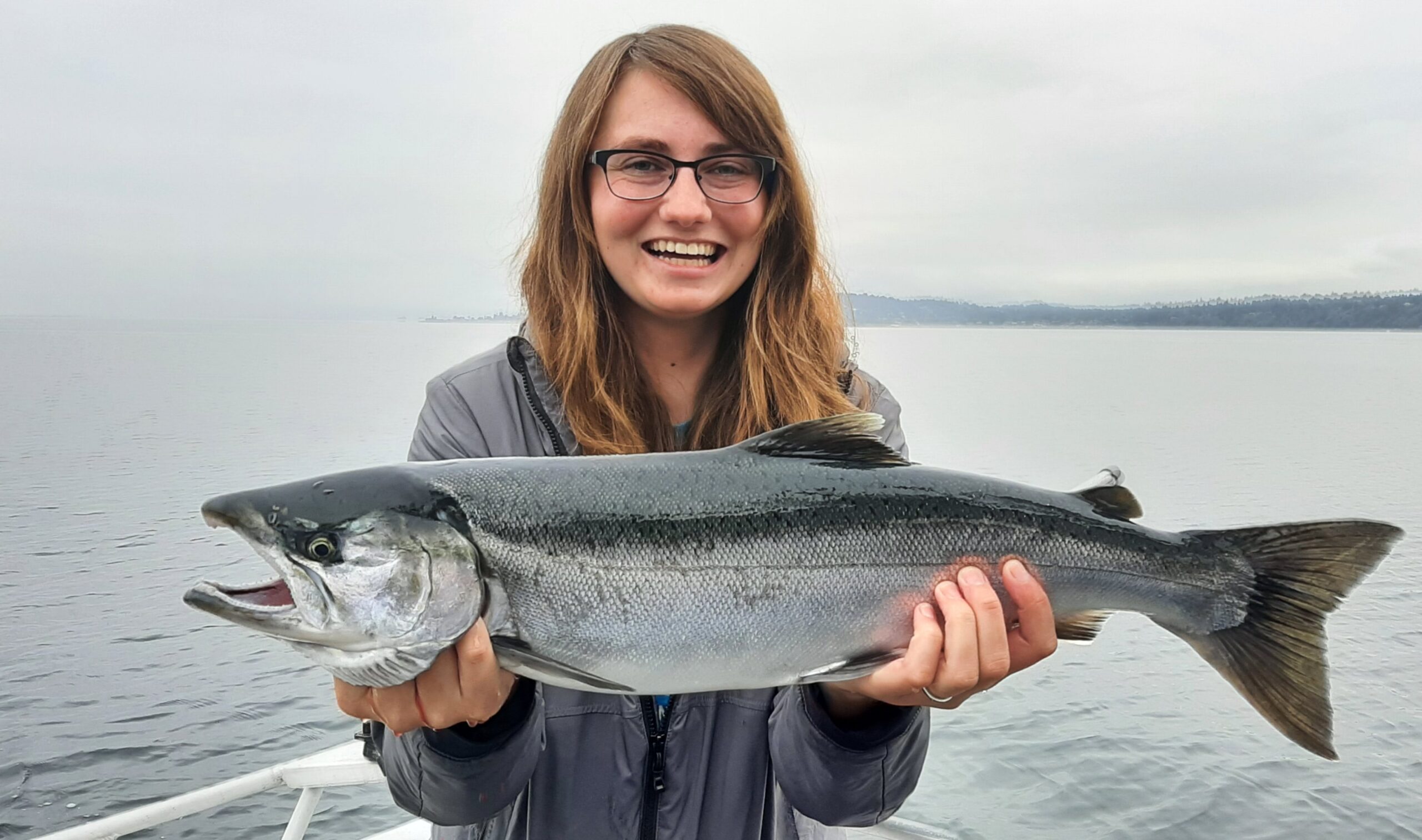Although this time of year can seem low on fishing opportunities, there is one fishery that I always look forward to. The Cowlitz River smelt fishery is a truly special opportunity. It’s unique for several reasons. One, you don’t even use a fishing pole! Two, you usually have less than a week’s notice when it opens. Three, it’s only open for a few hours at a time.
Thankfully, there is a generous 10-pound limit, and you don’t need a fishing license to participate. Smelt are absolutely delicious when fried or smoked. They’re very oily fish, and their meat is soft and sweet. If you aren’t interested in eating them, they make great cut bait or crab bait. Interested in trying the fishery? Let’s dive into how and where to get them.
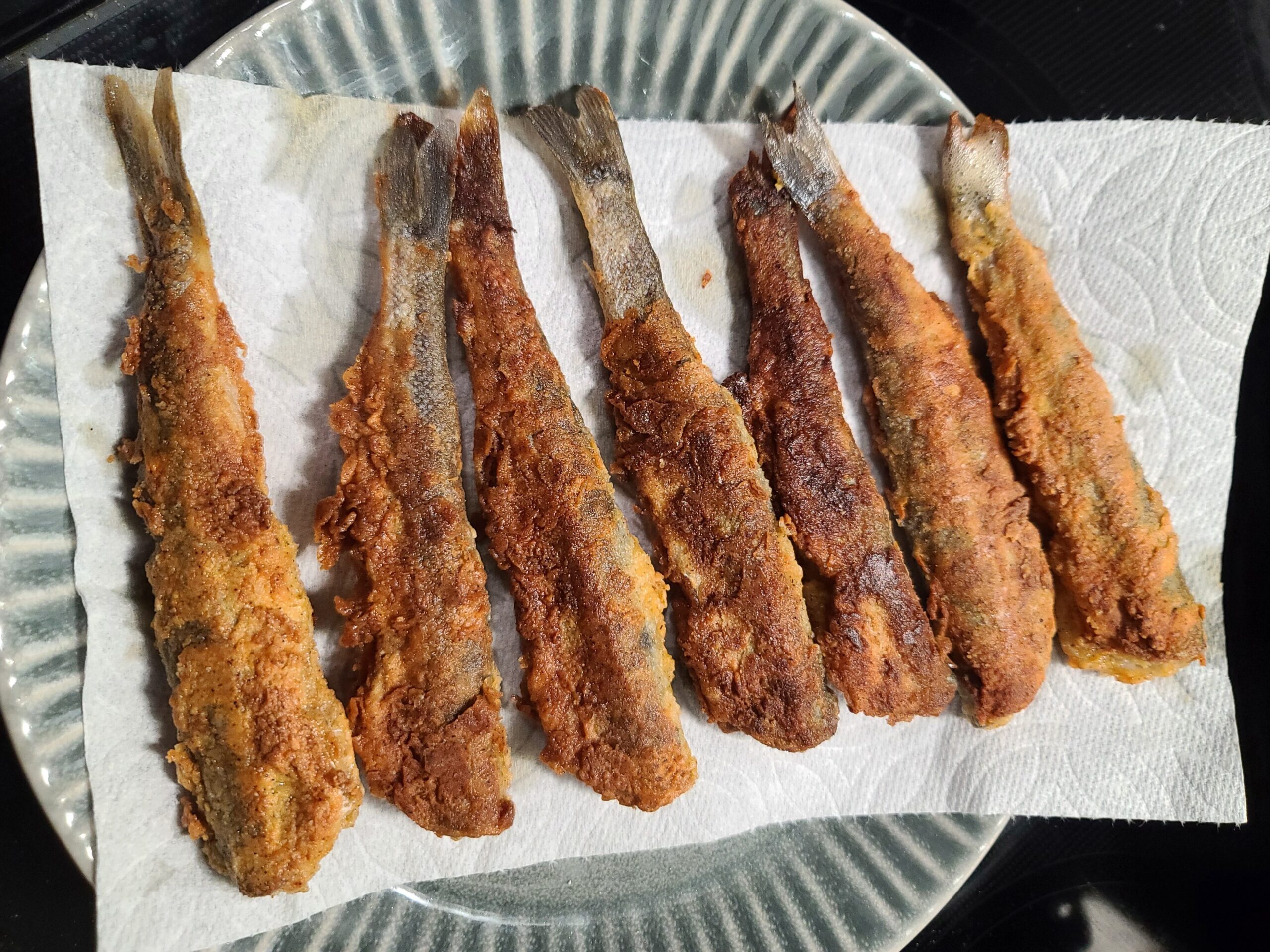
Thankfully, the gear needed for smelt dipping is pretty minimal. You will need a bucket to hold your catch, a scale, and a long-handled net. I typically use a 5-gallon bucket, but you can get away with using a smaller bucket if that’s what you have. The limit is 10 pounds, which WDFW says is typically a quarter of a 5-gallon bucket. It’s a good idea to carry a scale though, in case you get checked by a game warden.

The most important advice I can give you is to make sure your net has a long handle and fine mesh. A typical landing net won’t do the job. The handle isn’t long enough to scoop down to the bottom of the river, and your smelt will slip through the wide mesh in the net. Here’s another word of advice–get your net during the off-season and don’t wait until the next dip is announced. Sporting goods stores can and do sell out when a smelt dip is announced, so if you wait, you might have to drive far to get one, or you can make your own.
If you’re interested in participating in the next smelt dip, you’re probably wondering where to go. During the last dip, the boundaries were between the Tenant Way Bridge and the mouth of the North Fork Toutle River. This stretch of the Cowlitz River has ample public shore access. You can find a map of popular spots on WDFW’s smelt web page, or strike out on your own (but be mindful of private property). You can expect to have company, so it’s a good idea to show up an hour or so early to stake out your spot. Longview, Kelso, and Castle Rock all have gas stations and restrooms. There’s a dock at the boat launch in Castle Rock, if you don’t want to get your feet wet or risk falling in the river while navigating the steep riverbank.
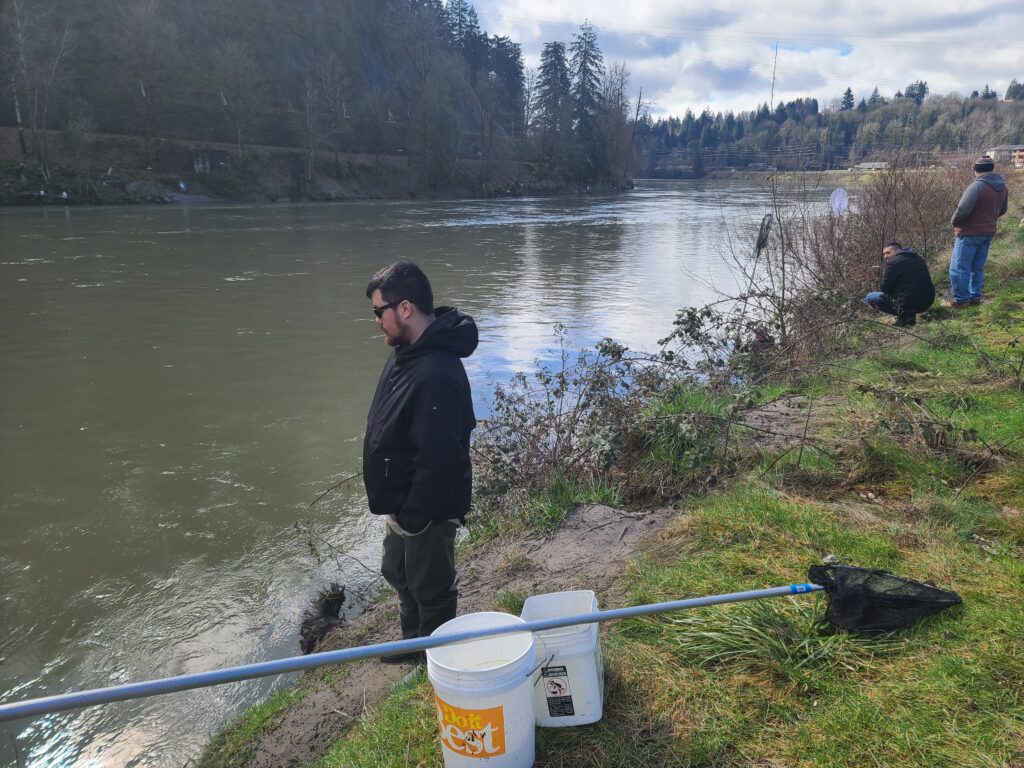
Once you’re at the river, pick your spot. As previously mentioned, riverbanks can be steep, not to mention thorny. Be careful not to trip or slide- no fish is worth a fall in the river! You can wear a life vest to be extra cautious and put life vests on any kids joining the adventure. If the fish are in, one spot is as good as any. Dip your net in the river and sweep through it with one fluid motion.
You want to go quickly enough so that the fish can’t swim out of the net. You should be able to feel them hitting your net. Don’t be afraid to drag against the bottom if you need to. Resist the temptation to net as far away from you as you can. Sometimes the fish are right up against the bank! Deposit your catch carefully in the bucket and keep weighing them to ensure you don’t exceed your 10-pound limit. Like any other fish, put your catch in an iced cooler on the way home so that their meat stays fresh and firm.
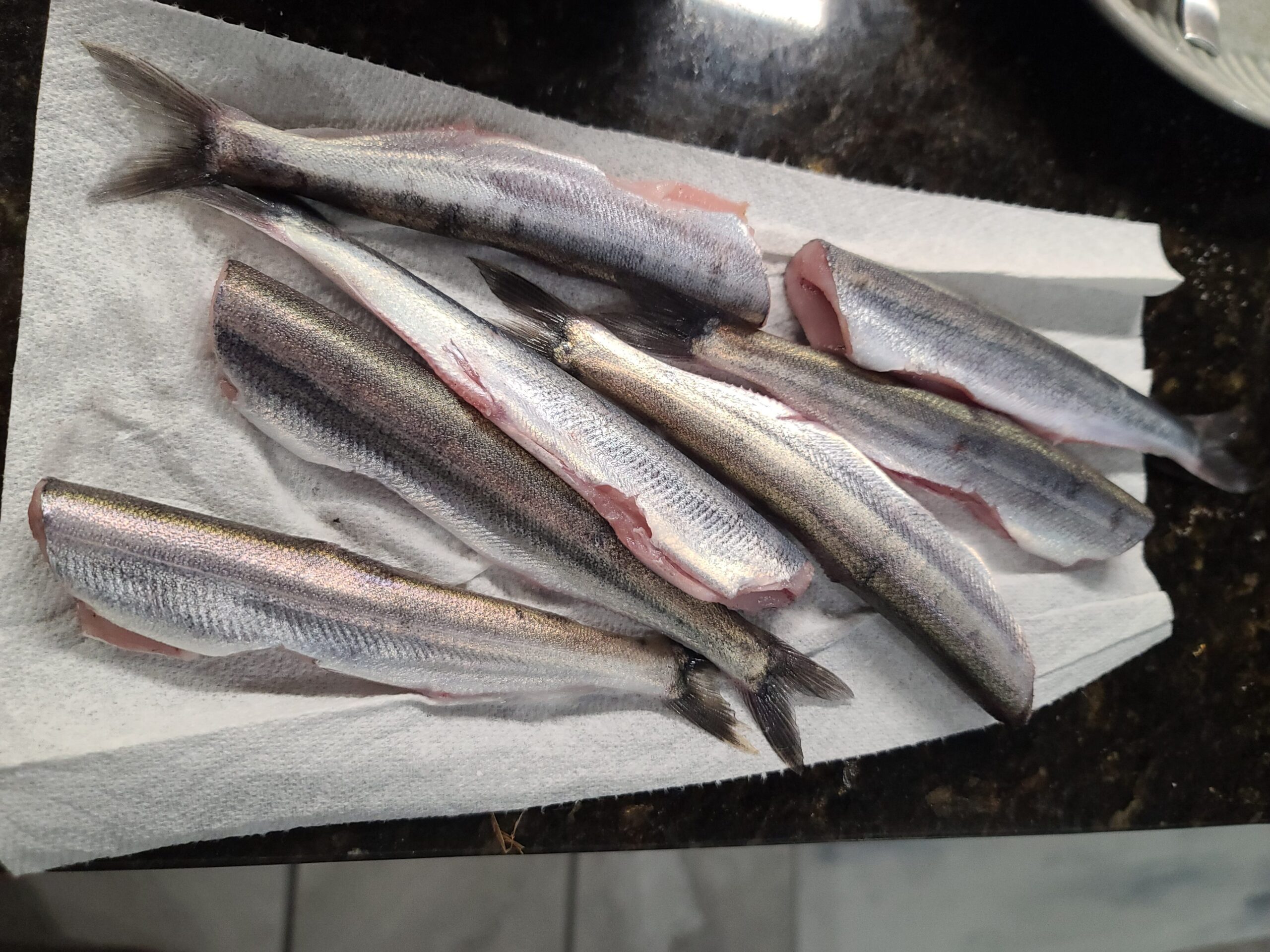
I’ll leave you with some interesting facts about Pacific Smelt. Just like salmon, they hatch in rivers and spend their lives at sea. They return to their home rivers to spawn when they’re between 2 to 5 years old. Again, just like salmon, they’re an oily fish. They’re about 15% oil! They’re also called “candlefish” because they will catch on fire if you hold them up to a lighter.
Sadly, they’re considered an endangered species. Around the mid 90’s, their populations began to sharply decline. WDFW closely monitors their return numbers and determines if they are healthy enough to support a recreational fishery. This year, we were lucky enough to get not one, but two smelt openers. The reason that our smelt fishery is so limited is to protect their sensitive populations. They are susceptible to overfishing, so to ensure that future generations get to enjoy this fishery, it is tightly regulated and monitored.
Be sure to follow the rules! Don’t exceed your 10-pound per person limit, and only net the section of the river that is open. Carry a watch or check your phone so that you don’t start dipping until the time WDFW specifies. Most importantly, have fun!





